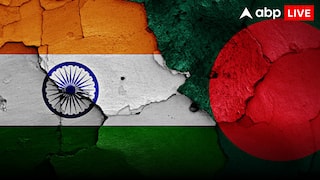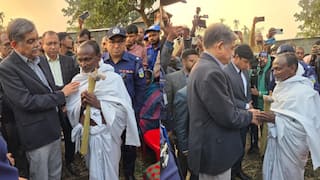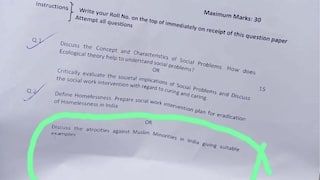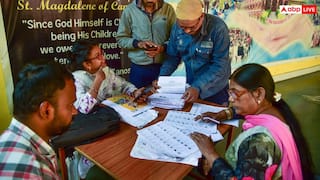What Are Basohli Paintings? Art From J&K's Kathua That Just Received GI Tag
The first independently GI-tagged product from the Jammu region is a Basohli painting from the Kathua district.

Following approval from the National Bank for Agriculture and Rural Development (NABARD), the world-renowned "Basohli" painting from the Kathua district of Jammu and Kashmir has received the Geographical Indication (GI) tag, said Union Minister, Dr. Jitendra Singh.
A proud moment for #Basohli region of district #Kathua in #JammuAndKashmir.
— Dr Jitendra Singh (@DrJitendraSingh) April 3, 2023
The famous Basohli paintings have received the Geographical Indication (GI) tag.
This unique painting known for evocative colors and deep-set facial patterns will now gain more prominence globally. pic.twitter.com/X1U54bVLBQ
The first independently GI-tagged product from the Jammu region is a Basohli painting from the Kathua district. The GI tag can now only be used by an authorized user in relation to these products.
A type of intellectual property right known as a "geographic indication" (GI) is used to identify goods that are unique in nature, quality, and other characteristics due to their origin in a specific area.
"The process for GI-tagging of nine products was initiated by NABARD in consultation with the Department of Handicrafts and Handloom (J&K) in December 2020. The GI tags have now finally been granted to these products after a long legal process," an official spokesman said as quoted by news agency PTI.
Other products that were pitched for GI-tagging included Basohli paintings, Basohli woolen products (Kathua), Chikri woodcraft (Rajouri), Bhaderwah rajma (Doda), Mushkbudji rice (Anantnag), Kaladi (Udhampur), Sulai honey (Ramban), Anardana (Ramban), and Ladakh wood carving (Ladakh).
On March 31, these products from Jammu and Kashmir were among 33 others that were cleared for GI-tagging, the most in a single year.
What Are Basohli Paintings?
India's cultural landscape has been shaped by the fortress town of Basohli, perched magnificently atop a low hill at the edge of a lush forest. In the foothills of the Western Himalayas in the Jammu and Punjab States, a style of painting with strong use of primary colors and a unique facial formula was prevalent in the seventeenth and early eighteenth centuries, according to the J&K government site.
The earliest works of art in this style started in Basohli from where the style spread to the Hill States of Mankot, Nurpur, Kulu, Mandi, Suket, Bilaspur, Nalagarh, Chamba, Guler and Kangra.
In the 1921 annual report of the Archaeological Survey of India for the years 1918-19, Basohli painting is mentioned for the first time. “a series of old paintings of the Basohli School were purchased, and the Curator concludes that the Basohli Schools is possibly of pre-Moghul origin, and so-called Tibeti pictures are nothing but late productions of this school,” the report stated in reference to the acquisitions made by the Archaeological Section of the Central Museum, Lahore.






































